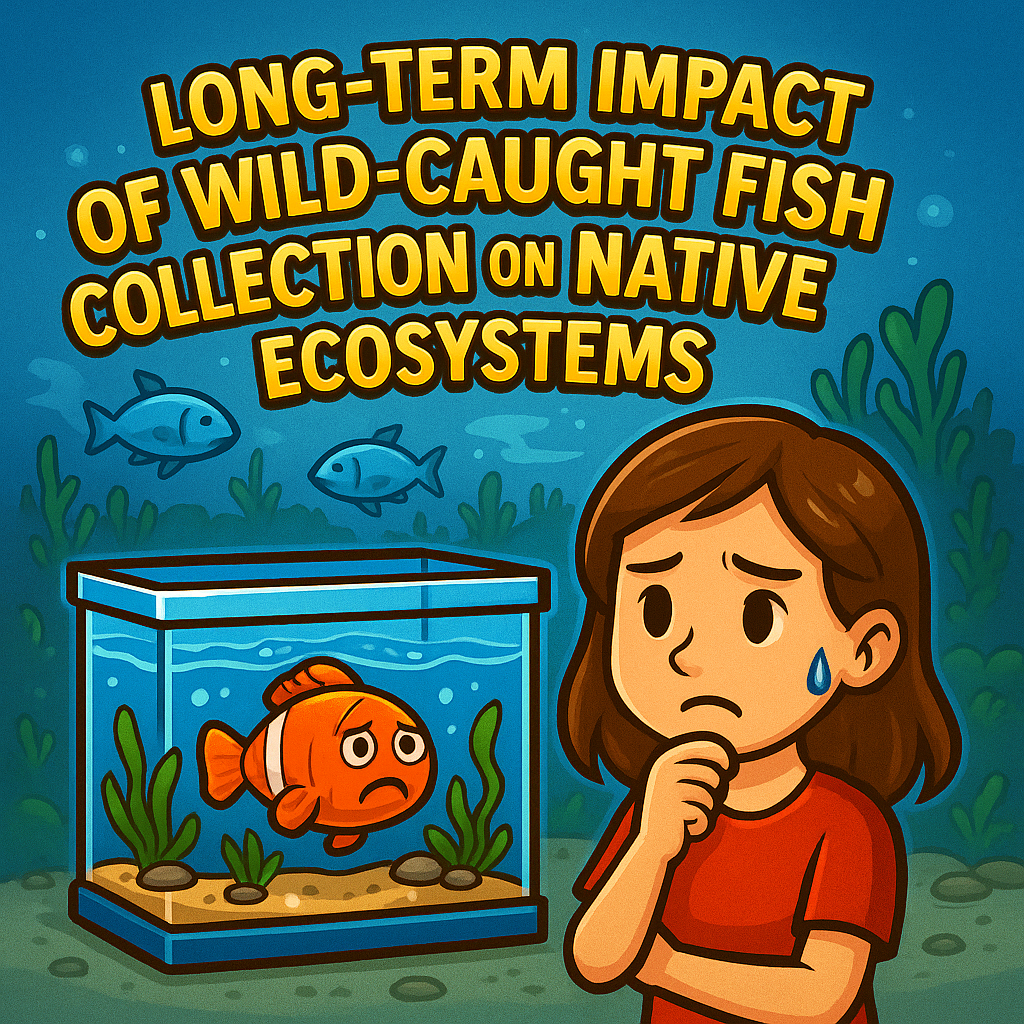The Long-Term Impact of Wild-Caught Fish Collection on Native Ecosystems
Long-Term Impact of Wild-Caught Fish Collection on Native Ecosystems
🌍 Ecological Impacts
- 🧬 Population Genetics
- Continuous removal of the largest and most colorful breeders reduces genetic variability.
- Results in bottleneck effects, making populations more vulnerable to disease and environmental changes.
- 🕸️ Food Web Disruption
- Many fish act as keystone grazers (plecos controlling algae, cichlids managing snail populations).
- Removing them can trigger trophic cascades → algae blooms, pest outbreaks, or loss of biodiversity.
- 🌡️ Habitat Degradation Link
- Collection pressure combined with climate change (warming waters, altered flood cycles) can accelerate local extinctions.
- Example: Rio Xingu Zebra Pleco (Hypancistrus zebra) now critically endangered due to Belo Monte Dam + overcollection.
🧑🌾 Community & Economic Impacts
- 💵 Economic Dependency
- In regions like the Amazon & West Africa, 70–80% of households in certain villages rely on aquarium fish exports.
- When managed poorly → boom-bust cycles collapse income.
- 🌳 Conservation by Incentive
- Programs like Project Piaba (Brazil) show that sustainable collection of cardinal tetras protects entire river systems by making standing forest more profitable than logging.
- 📉 Market Dynamics
- Demand surges for rare species → illegal trade, smuggling, and price inflation.
- Examples: Asian Arowana, Zebra Pleco, Altum Angelfish.
⚖️ Ethical & Welfare Concerns
- 🦠 Collection Techniques
- Some regions still use cyanide or clove oil anesthesia → damages reefs and kills non-target organisms.
- 📦 Post-Capture Mortality
- Stress during handling, poor acclimation, and hypoxia during shipment → up to 70% mortality in some supply chains.
- ⚰️ Hidden Mortality Factor
- For every fish sold, 2–5 may die during capture and transit if not properly managed.
🛠️ Sustainability Solutions
- 🐠 Captive Breeding
- Mass production of species like Discus, Clownfish, Guppies reduces wild pressure.
- Challenges: Some species (e.g., Zebra Pleco, Loaches, certain Gobies) remain extremely difficult to breed in captivity.
- ✅ Certification & Traceability
- Labels like MAC (Marine Aquarium Council) & community-based programs ensure ethical sourcing.
- Barcoding & microtagging can verify wild vs. captive origins.
- 🛑 Regulatory Controls
- CITES listings, local bans, and quota systems protect vulnerable species.
- Example: Asian Arowana trade restricted to captive-bred, microchipped individuals.
📊 Key Technical Takeaways
- 🧬 Genetic erosion reduces resilience → fewer adaptive traits.
- 🕸️ Ecosystem imbalances emerge when functional species are removed.
- 💵 Economic livelihoods tied to sustainability → poor management harms both people & fish.
- ✅ Captive breeding + certified collection = long-term balance between hobby and conservation.

Powered by Lightspeed
Display prices in:USD